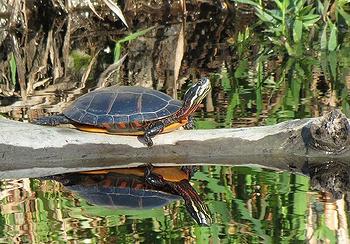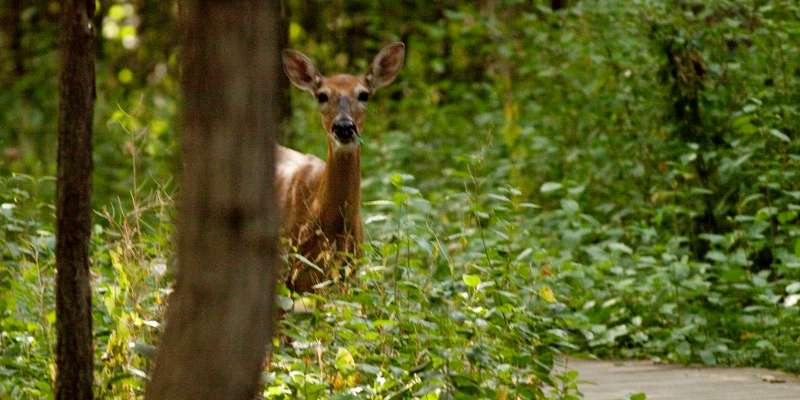The cassowaries are ratites, very large flightless birds, in the genus Casuarius native to the tropical forests of New Guinea, nearby islands, and northeastern Australia.There are three extant species recognized today. The most common of these, the Southern Cassowary, is the third tallest and second heaviest living bird, smaller only than the ostrich and emu.
Cassowaries feed mainly on fruit, although all species are truly omnivorous and will take a range of other plant food including shoots, grass seeds, and fungi in addition to invertebrates and small vertebrates. Cassowaries are very shy, but when provoked they are capable of inflicting injuries to dogs and people, although fatalities are extremely rare.
Description:
The Northern and Dwarf Cassowaries are not well known. All cassowaries are usually shy birds of the deep forest, adept at disappearing long before a human knows they are there. Even the more accessible Southern Cassowary of the far north Queensland rain forests is not well understood.
Females are bigger and more brightly colored. Adult Southern Cassowaries are 1.5 to 1.8 metres (4.9–5.9 ft) tall, although some females may reach 2 metres (6.6 ft), and weigh 58.5 kilograms (129 lb).
All cassowaries have feathers that consist of a shaft and loose barbules. They do not have retrices (tail feathers) or a preen gland. Cassowaries have small wings with 5-6 large remeges. These are reduced to stiff, keratinous quills, like porcupine quills, with no barbs. A claw is on each second finger. The furcula and coracoid are degenerate, and their palatal bones and sphenoid bones touch each other. These, along with their wedge-shaped body, are thought to be adaptations to ward off vines, thorns, and saw-edged leaves, allowing them to run quickly through the rainforest.
A cassowary's three-toed feet have sharp claws. The second toe, the inner one in the medial position, sports a dagger-like claw that is 125 millimetres (5 in) long. This claw is particularly fearsome since cassowaries sometimes kick humans and animals with their enormously powerful legs (see Cassowary Attacks, below). Cassowaries can run up to 50 km/h (31 mph) through the dense forest. They can jump up to 1.5 metres (4.9 ft) and they are good swimmers, crossing wide rivers and swimming in the sea as well.
All three species have horn-like but soft and spongy crests called casques on their heads, up to 18 cm (7 in).These consist of "a keratinous skin over a core of firm,cellular foam likema terial". Several purposes for the casques have been proposed. One possibility is that they are secondary sexual characteristics.Other suggestions include that they are used to batter through underbrush, as a weapon for dominance disputes, or as a tool for pushing aside leaf litter during foraging.
The latter three are disputed by biologist Andrew Mack, whose personal observation suggests that the casque amplifies deep sounds. However, the earlier article by Crome and Moore says that the birds do lower their heads when they are running "full tilt through the vegetation, brushing saplings aside and occasionally careening into small trees. The casque would help protect the skull from such collisions".
From an engineering perspective the wedge-shaped casque is also the most efficient way to protect the head by deflecting falling fruit. As cassowaries live on fallen fruit they spend a lot of time under trees where seeds the size of golfballs or larger are dropping from heights of up to 30 metres. Mack and Jones also speculate that the casques play a role in either sound reception or acoustic communication. This is related to their discovery that at least the Dwarf Cassowary and Southern Cassowary produce very-low frequency sounds, which may aid in communication in dense rainforest. This "boom" is the lowest known bird call, and is on the edge of human hearing. Crowe described a cooling function for the very similar casques of guineafowl.
The average lifespan of wild cassowaries is believed to be about 40 to 50 years.
Diet:
Cassowaries are predominantly frugivorous. Besides fruits, their diet includes flowers, fungi, snails, insects, frogs, birds, fish, rats, mice, and carrion. Fruit from at least 26 plant families has been documented in the diet of cassowaries. Fruits from the laurel, podocarp, palm, wild grape, nightshade, and myrtle families are important items in the diet. The cassowary plum takes its name from the bird.
Where trees are dropping fruit, cassowaries will come in and feed, with each bird defending a tree from others for a few days. They move on when the fruit is depleted. Fruit is swallowed whole, even items as large as bananas and apples.
Cassowaries are a keystone species of rain forests because they eat fallen fruit whole and distribute seeds across the jungle floor via excrement.
As for eating the Cassowary, it is supposed to be quite tough. Australian administrative officers stationed in New Guinea were advised that it "should be cooked with a stone in the pot: when the stone is ready to eat so is the Cassowary".
Role in seed dispersal and germination:
Cassowaries feed on the fruit of several hundred rainforest species and usually pass viable seeds in large dense scats. They are known to disperse seeds over distances greater than a kilometre, and thus play an important role in the ecosystem. Germination rates for seeds of the rare Australian rainforest tree Ryparosa were found to be much higher after passing through a cassowary's gut (92% versus 4%)
Cassowary attacks:
Cassowaries have a reputation for being dangerous to people and domestic animals. During World War II American and Australian troops stationed in New Guinea were warned to steer clear of them. In his book Living Birds of the World from 1958, ornithologist Thomas E. Gilliard wrote:
"The inner or second of the three toes is fitted with a long, straight, murderous nail which can sever an arm or eviscerate an abdomen with ease. There are many records of natives being killed by this bird."
This assessment of the danger posed by cassowaries has been repeated in print by authors including Gregory S. Paul (1988)
and Jared Diamond (1997). Of 221 attacks studied in 2003, 150 were against humans. 75% of these were from cassowaries that had been fed by people. 71% of the time the bird chased or charged the victim. 15% of the time they kicked. Of the attacks, 73% involved the birds expecting or snatching food, 5% involved defending natural food sources, 15% involved defending themselves from attack, 7% involved defending their chicks or eggs. The 150 attacks included at least one human death.
One documented human death was caused by a cassowary on 6 April 1926. 16-year-old Phillip McClean and his brother, aged 13, came across a cassowary on their property and decided to try to kill it by striking it with clubs. The bird kicked the younger boy, who fell and ran away as his older brother struck the bird. The cassowary then charged and knocked the older McClean to the ground and kicked him in the neck, opening a 1.25 cm (0.49 in) wound which may have severed his carotid artery. The boy managed to escape, but died shortly afterwards as a result of his injuries.
Cassowary strikes to the abdomen are among the rarest of all, but there is one case of a dog that was kicked in the belly in 1995. The blow left no puncture, but there was severe bruising. The dog later died from an apparent intestinal rupture.
FOR MORE INFORMATION PLEASE VISIT OUR PAGE.
Thank you..
 RSS Feed
RSS Feed Twitter
Twitter




 02:22
02:22
 Environment Places
Environment Places











































